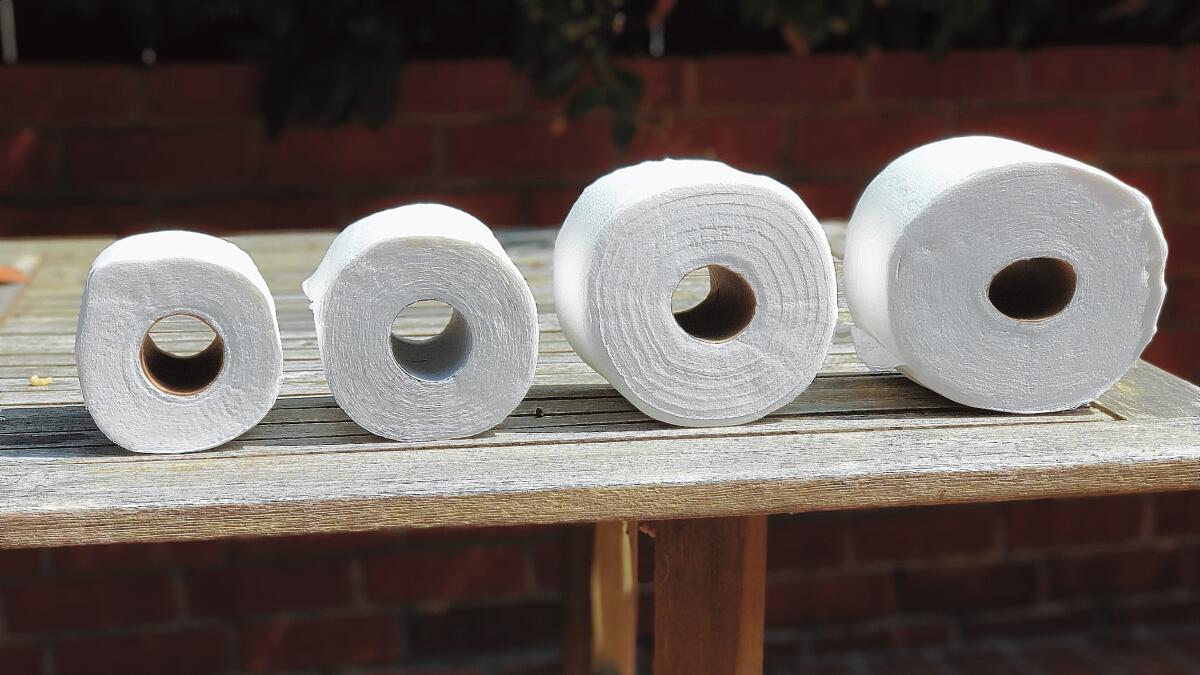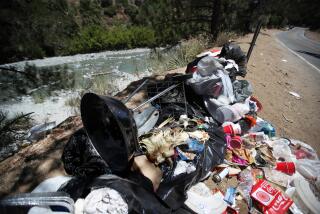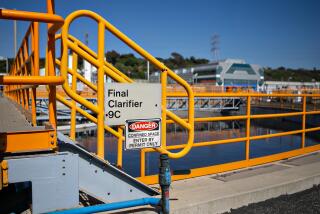Op-Ed: Coronavirus pandemic hoarding pushed me to give up toilet paper

Can we talk about toilet paper?
My stash is running low, and my guess is yours is too.
I’ve haunted the paper goods aisle in my neighborhood stores and scoured online sites. Everything’s gone or on back order. The supply chain has been disrupted by coronavirus pandemic panic buyers, and it’s not clear when it will get back on track.
It’s easier to score a delivery appointment on Amazon Fresh than a single, scratchy generic roll.
But I’m not worried. I’m so over toilet paper.
On Wednesday, I hooked up a device that I hope will help me kick the habit. It’s a simple hose attachment that turns my Toto into a bidet at the turn of a switch. If the hype proves true, it will change my life for the better, save me some cash and do some environmental good in the process.
I wish I could say I’ve been thinking about this for some time. I write about trash and its effects on the natural environment, though I’ve focused on the scourge of discarded plastic. But the innocuous white roll should have been on my radar long ago because of how it is made, namely using wood chips from logged forests, harsh chemicals, and lots and lots of water.
According to the American Forest and Paper Assn., the paper industry has recently clamped down on its use of water. Still, to manufacture one ton of any kind of paper, 10,540 gallons of water were required as of 2016. In a 2019 report titled “The Issue With Tissue,” the Natural Resources Defense Council says the toilet paper industry has played a key role in the deforestation of the environmentally important boreal forest in Canada.
But the environmental impact of toilet paper was not on my mind as I turned to Google the other day. I just wanted to know my options if I ran out of TP before the pandemic ended. The options were many, all unpalatable or ridiculous. I could use newspaper pages, gathered leaves or a sponge on a stick. I could switch to reusable toilet wipes, which are called — for reasons I don’t want to think about — “the family cloth.” One video jokingly suggested making toilet paper by using printer paper soaked in water and then baked in the oven.
Yeah, no.
I’m a relatively hard-core conservationist, but even I have my limits. That’s why I was excited to stumble upon bidet attachments. Although bidet toilets are common in Europe and Japan, they’ve never caught on in America. And part of the reason is perceived cost. That’s according to Jason Ojalvo, chief executive officer of the cheeky bidet attachment startup Tushy. (Motto: “for people who poop.”) Many people are under the misconception that installing a bidet means calling a plumber and shelling out hundreds, if not thousands of dollars, he said.
The basic toilet attachment sells for less than $100 and the many brands and varieties include under-the-seat units and hand-held versions. That’s not a lot of money considering that Americans spend more than $13 billion a year to keep the Charmin and Scott in stock, according to market data researcher Statista.
Bidets were growing in popularity in the U.S. even before the Great Toilet Paper Shortage of 2020, Tushy founder Miki Agrawal said, but interest has recently surged for obvious reasons. Before the coronavirus pandemic, the biggest hurdle was assuaging such concerns as “Will it squirt, um, poop up my rear end?” (no) and “Does it use dirty toilet water?” (also no). The bidet attachment connects to the water pipe that connects to your toilet tank, not to the toilet rim.
Another selling point is the claim that water cleans better than paper and is less abrasive on one’s delicate parts. Not much scientific data are available on the topic, but common sense and my own limited experience support that conclusion.
My only hesitation about taking the bidet plunge was water. Toilets account for the largest source of residential water use and a bidet attachment uses about a pint a pop. But saving water is important in dry Southern California, so I reached out to the Los Angeles Department of Water and Power. I learned that if a bidet tool was paired with a water-saving device such as a low-flow showerhead or a faucet aerator— both available at no cost from the DWP — the net water usage could be a wash.
This was good news. Two years ago I installed an ultra-low flow toilet, so I don’t have to feel guilty about an extra pint per flush.
But I’m not going to lie. Having a jet of cool water spray your nether regions takes some getting used to. I still reflexively reach for the roll sometimes rather than the washcloth to dry off. I’m getting the hang of it, and I think that before long it will be as natural as, well, washing my hands.
I’m not saying everyone should rush out and buy a bidet. But think about it this way: Would you rather invest now in something that might save you money or find yourself with your pants down during the next disaster with just a sponge on a stick as a backup plan?
More to Read
A cure for the common opinion
Get thought-provoking perspectives with our weekly newsletter.
You may occasionally receive promotional content from the Los Angeles Times.











